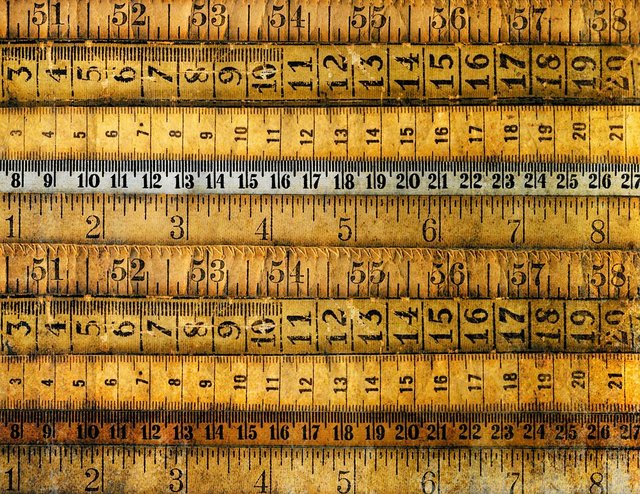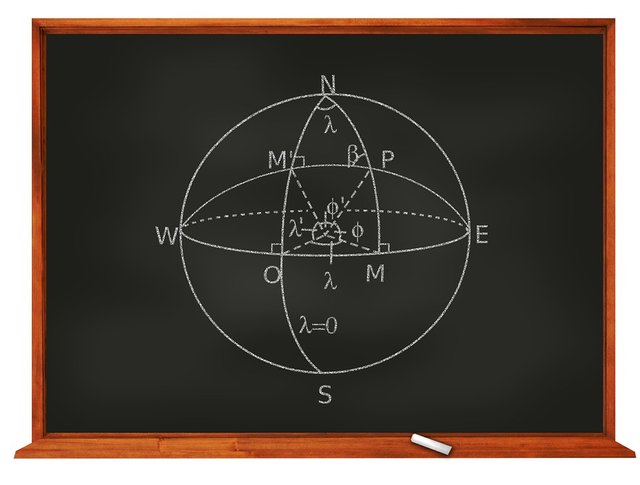System of measurements of Magnitudes

Source of public domain of pixabay
To measure a quantity of a certain magnitude is to compare it with another quantity known about this magnitude, which takes as a reference and is named a unit expressed all the times the unknown quantity contains the acquaintance or joined. The measurement is an operation that must produce like turned out a numerical value, in the fund the election of the unit that it goes away to use in a measurement is an arbitrary question, although it is convenient to bear in mind that he adapts himself to the value to measure in a rational way, for example, it would not be logical to use the unit cm if what we want to measure is one distance between two cities.
Textual appointment: book Metrología: introduction, concepts and instruments for Maria Moro Piñeiro pág.: 15. 2000.
The metric decimal system.
For this occasion as fundamental unit the unit of length, so that it was related to the dimensions of the globe and that his multiple ones were a potency of ten. To determine the unit of length there measured itself the arch of the terrestrial meridian understood between the arch of the terrestrial meridian understood between Dunkerque and Barcelona, to the ten-millionth part of the quadrant of the above mentioned meridian one gave him the name of meter (of the Greek métron, that means measurement).
An important contribution in 1889 celebrated in Paris an international conference of weight and measured, in that it remembered, that the legal meter internationally was the length to 0°C of temperature of the distance between two marks of a platinum rule iridiado, that survives in the office of weight and measurements of Sèvres. The metric decimal system has been accepted almost in the whole world and establishes five types of units of measurements of length, of surface, of volume, of capacity and of mass, for the historical reasons, someone magnitudes, like the angle measurement or the time, they do not continue the decimal system, but a base system sexagesimal.
Units of length.
The meter is the fundamental unit of length and m is represented by the symbol; the multiple ones of the meter form preferring to the word meter how kilometers, hectómetros and the submultiple ones that it represents in decimeters, centimeters, the units of length increase and diminish of ten in ten.

Table prepared for @dark69.
Surface units.
The fundamental unit of surface is the square meter, which represents with the symbol m ² and which is defined as the surface of a square which side measures 1 meter long, the surface units it increases or they diminish of hundred in hundred. It is used in case like to measure grounds, apart also there is used the unit of hectare, which represents 1 h m ², and the submultiple one is the centiárea equivalent to 1 m ².

Table prepared for @dark69.
Units of volume.
The fundamental unit of volume is the cubic meter, it is represented by the m and is defined as the volume of a bucket of one meter of edge, the units of volume, the units of volume it increases and they diminish of thousand as it can be observed in the low table of multiple and submultiple.

Table prepared for @dark69.
Units of capacity.
The fundamental unit of capacity is the liter, which is represented by the symbol L and is defined as the capacity of a receptacle which volumes you are equivalent to 1 dm, it is units of capacity increases and they diminish in ten in ten, it is very similar to the unit of length, meter.

Table prepared for @dark69.
units of mass.
The fundamental units of mass there is the Kilogram, which symbolizes with the expression kg and this one is defined as the mass, which has 1 dm of pure water distilled to the temperature of 4°C, the units of mass is increased by it and they diminish of ten in ten.

Table prepared for @dark69.
angular Units.
To measure angles the system is used frequently sexagesimal, in this system it is supposed that to any circumference 360 corresponds °, where the zero placed in the top right part is the symbol that it represents to the grade °, is the unit used to measure angles, now if the circumference splits into four equal parts, there are obtained cuatros straight angles that 90 measures °. In turn, every grade is divided in 60 equal parts called minutes, that is to say, 1 ° = 60 ', where her as placed in the top right part it symbolizes the minutes, on his part, every minute they split into 50 equal parts, which receive the name of second, 1 ' = 60 ", where the two as placed in the top right part they symbolize the second ones.

Source of public mastery of pixabay
Unit of time.
The fundamental used unit, to measure the time is the second one, which is defined as 1/86400 of the solar average day, of the time invested by the Earth in giving a finished return about his axis and is represented by means of the symbol s, a minute mn, it is equivalent to the second 60 and 60 minutes it is equivalent at 1 hour, every day has 24 hours and the week is equivalent seven days and one year is the time used by the Earth in completing his movement of movement about the sun.
The years count with 365 days, approximately, since every four years a leap year of 366 days is had, to compensate the error that is accumulated on having supposed 365 exact, days one year it has 12 mese, that generally is provided with 30 to 31 days, except February that is 28 or 29 days old if the year is leap.

Source of public mastery of pixabay
Other systems of measurements
Also we have the Anglo-Saxon system, for it it turns out to be suitable to meet his units and the equivalencias with the correspondents of the metric decimal system, more used they consist in the following stage:


Table prepared for @dark69.
Conclusion.
Dividing from the science and our life, the measurements are important like in the experimentation, where they allow to assemble information later to organize it and to obtain conclusions, in such a way that it guarantees the uniformity and equivalence in the measurements. some of the example of his importance we have it in in field of the science of the physics and chemistry, since it is necessary to measure many variables, at level of a major precision in an experiment, it increases the need to improve the measurements.
You consult Bibliographical.
Magnitudes and units of measurement (Mechanized basic) - Page 33 for Esteban José Domínguez? Julián Ferrer - 2017
International system of units of measurement - Page 1 - 2000.
Big manual of physical magnitudes and his units. Atanasio Lleó Morilla? Lourdes Lleó Morilla - 2011.
International system of measurements Raymond Allard - 1965
Metrología: introduction, concepts and instruments - Page 15. Maria Moro Piñeiro - 2000.
Systems of physical units José Luis Galán García - 1987.

I upvoted your post. Thank you @yehey for steem delegation, we are helping to promote authors with good content.
Best regards,
@Council
Please vote @Yehey as one of your Witness. Join us at https://SteemChat.com steem community.
Use @automation chat bot for a fun conversation.
Posted using https://Steeming.com condenser site.
Thanks for his valuable support and to value the content of my post